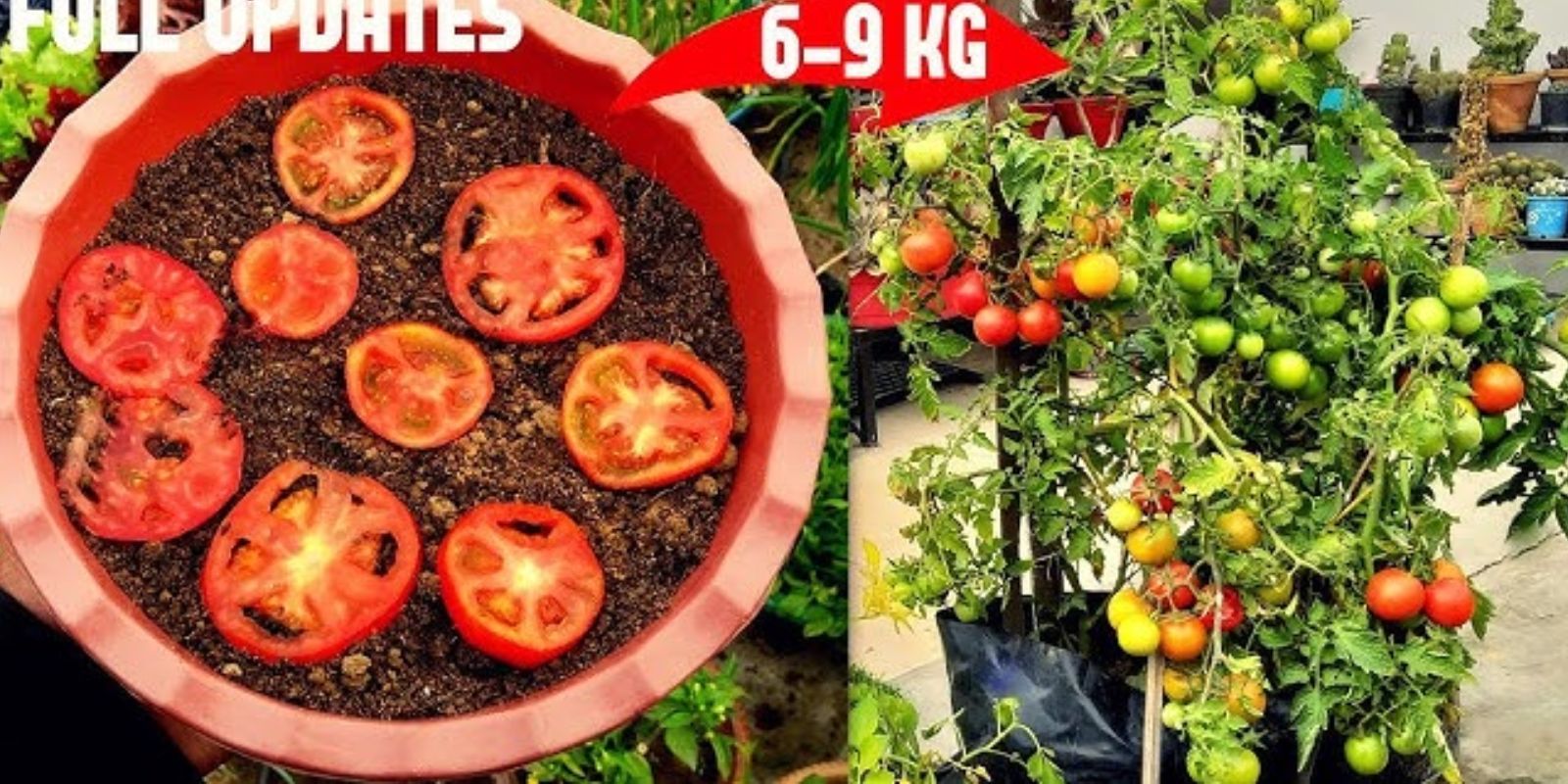Introduction:
Tomatoes are one of the most versatile and widely-loved fruits in the world. From sauces and salads to salsas and soups, their uses in the kitchen are endless. For many gardeners, growing a steady supply of fresh tomatoes at home is the ultimate goal. But while it may seem intimidating, growing tomatoes can be remarkably simple with the right techniques. In this article, we’ll walk you through the easiest way to grow tomatoes so you’ll never run out, whether you have a sprawling garden or just a small balcony.
Why Grow Your Own Tomatoes?
Growing tomatoes at home offers numerous benefits:
- Superior Taste: Freshly picked tomatoes taste far better than store-bought ones, which are often harvested before ripening.
- Cost-Effective: A single tomato plant can yield pounds of fruit, saving money over time.
- Sustainability: Reduce your carbon footprint by growing your own food.
- Health Benefits: Homegrown tomatoes are free from harmful pesticides and can be grown organically.
Step-by-Step Guide to Growing Tomatoes
1. Choose the Right Variety
Select a tomato variety suited to your space and climate. Here are a few popular options:
- Cherry Tomatoes: Perfect for containers and small spaces.
- Roma Tomatoes: Great for sauces and cooking.
- Heirloom Tomatoes: For those who love unique flavors and colors.
- Beefsteak Tomatoes: Ideal for sandwiches and fresh slices.
Consult your local gardening center or online resources to find varieties that thrive in your region.
2. Start with Healthy Seeds or Seedlings
- Seeds: Start seeds indoors 6-8 weeks before your last frost date. Use seed trays filled with a quality seed-starting mix and keep them in a warm, sunny location or under grow lights.
- Seedlings: If starting from seedlings, choose healthy plants with strong stems and dark green leaves. Avoid leggy or yellowing plants.
3. Prepare Nutrient-Rich Soil
Tomatoes thrive in rich, well-draining soil with plenty of organic matter. Follow these steps:
- Test Your Soil: Use a soil test kit to check pH and nutrient levels. Tomatoes prefer a slightly acidic pH of 6.0-6.8.
- Amend the Soil: Add compost, aged manure, or organic fertilizers like bone meal to enrich the soil. Loosen it to a depth of at least 12 inches.
4. Plant in a Sunny Spot
Tomatoes are sun-loving plants that require at least 6-8 hours of direct sunlight daily. Choose a location that receives full sun and has good air circulation to prevent fungal diseases.
5. Support Growth
As tomato plants grow, they need support to keep fruits off the ground. Use these methods:
- Stakes: Drive a wooden or metal stake into the ground near each plant and tie the stem loosely to it.
- Cages: Tomato cages are an easy way to support the plant and keep it upright.
- Trellises: Ideal for vining varieties, trellises save space and improve air circulation.
6. Water Consistently
Tomatoes need consistent watering to thrive. Follow these tips:
- Deep Watering: Water the soil deeply to encourage strong root systems. Avoid shallow watering.
- Frequency: Water 1-2 inches per week, adjusting for rainfall and climate.
- Avoid Overwatering: Ensure soil is moist but not soggy to prevent root rot.
- Mulch: Apply a layer of mulch to retain soil moisture and regulate temperature.
7. Feed Regularly
Tomatoes are heavy feeders and benefit from regular fertilization:
- Start with Balanced Fertilizer: Use a fertilizer with equal parts nitrogen, phosphorus, and potassium when planting.
- Switch to Phosphorus-Rich Fertilizer: Once flowers appear, use a fertilizer higher in phosphorus to promote fruiting.
8. Prune for Productivity
Pruning helps direct the plant’s energy toward producing fruit:
- Remove Suckers: Pinch off small shoots (suckers) that form between the main stem and branches.
- Trim Lower Leaves: Remove leaves near the base to improve air circulation and prevent disease.
9. Monitor and Manage Pests and Diseases
Common tomato pests include aphids, hornworms, and whiteflies. Use organic methods such as neem oil, insecticidal soap, or companion planting to deter pests. Watch for diseases like blight or wilt and remove affected leaves promptly.
10. Harvest Regularly
Tomatoes are ready to pick when they are firm and fully colored:
- Check Daily: During peak season, check plants daily for ripe fruit.
- Harvest Gently: Use garden scissors or twist gently to avoid damaging the plant.
Tips for Year-Round Tomatoes
- Indoor Growing: Use grow lights and containers to grow tomatoes indoors during the off-season.
- Preservation: Freeze, can, or dry your tomatoes to enjoy them year-round.
- Succession Planting: Plant new tomatoes every 2-3 weeks for a continuous harvest.
Common Challenges and Solutions
1. Blossom End Rot
- Cause: Calcium deficiency or irregular watering.
- Solution: Maintain consistent watering and use calcium-rich soil amendments.
2. Yellow Leaves
- Cause: Overwatering, nitrogen deficiency, or disease.
- Solution: Adjust watering and apply balanced fertilizer.
3. Slow Growth
- Cause: Insufficient sunlight or cool temperatures.
- Solution: Relocate plants to a sunnier spot or use row covers to maintain warmth.
Conclusion:
Growing tomatoes doesn’t have to be complicated. With the right steps, tools, and care, you can enjoy a never-ending supply of fresh, delicious tomatoes from your garden. From selecting the perfect variety to harvesting plump fruits, each stage of the process is a rewarding experience.
Why wait? Start your tomato-growing journey today and savor the unbeatable taste of homegrown produce! Share your success stories or ask questions below—we’d love to hear from you. 🌱🍅
#GrowTomatoes #TomatoTips #GardeningHacks #HomegrownVeggies #SustainableGardening #EasyGardening #OrganicGardening #GreenThumb

